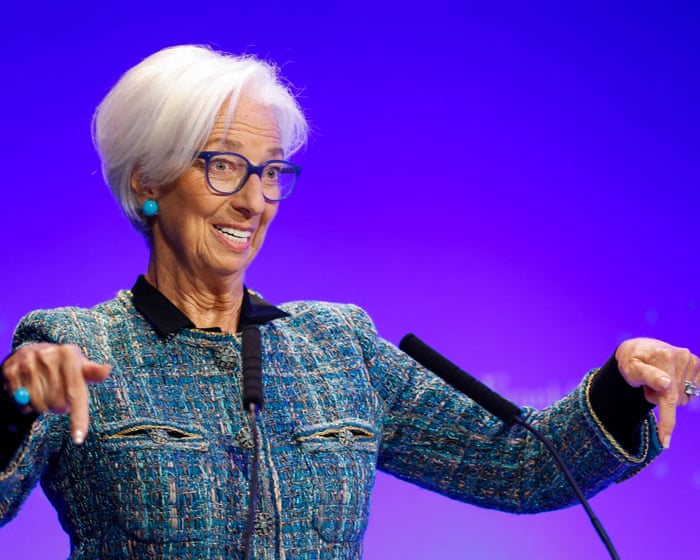Christine Lagarde has warned that Europe’s economy is “geared towards a world that is gradually disappearing” and called for reforms to boost growth. The European Central Bank (ECB) president noted that the EU’s reliance on international trade has made it vulnerable, as key partners have shifted away from the trade that once enriched the bloc’s exporters.
Donald Trump has spearheaded a global move toward protectionism, imposing high tariffs on nearly all trading partners. Meanwhile, China has leveraged its control over critical materials and products to apply pressure. Lagarde pointed out Europe’s susceptibility due to its “dependency on third countries for our security and the supply of critical raw materials.” She highlighted China’s dominance in rare earth metals, essential for electric motors and wind turbines, and the risk posed by power chips made by Nexperia in China, which could disrupt global car production.
Speaking at the European Banking Congress in Frankfurt, Lagarde criticized Europe for failing to tackle its own issues. She said policymakers have allowed weaknesses to “erode growth quietly, as each new shock nudges us onto a slightly lower trajectory.” She added that the internal market has stagnated, particularly in future growth areas like digital technology, artificial intelligence, and the capital markets needed to finance them.
Lagarde also described a “vicious circle” where European savers invest in U.S. stocks, fueling faster American economic growth and leaving Europe with stagnant productivity and increasing dependence on others.
However, she acknowledged some European strengths, such as a resilient labor market, rising digital investment, and government spending, especially on defense following Russia’s invasion of Ukraine, which has helped offset economic slowdown.
To spur recovery, Lagarde proposed reducing trade barriers between EU countries, which ECB analysis equates to a 100% tariff on services and 65% on goods. Lowering these to the level of the Netherlands, a relatively open economy, could fully compensate for the impact of U.S. tariffs, she said.
She advocated for mutual recognition of regulated companies, allowing them to operate across Europe with authorization from any single country, and urged the adoption of qualified majority voting on tax matters to prevent individual member states from blocking changes. These steps, she argued, would harmonize VAT and make it easier for small European businesses to access the entire EU market without navigating 27 different tax systems.
Frequently Asked Questions
Of course Here is a list of FAQs about ECB President Christine Lagardes statement that Europes economy is structured for a world that no longer exists designed to be clear and accessible
BeginnerLevel Questions
1 What did Christine Lagarde mean by that statement
She meant that the rules supply chains and trade relationships that Europes economy was built on have fundamentally changed The old predictable way of doing business is over and the economy needs to adapt to new realities like geopolitical tensions and climate change
2 What is the old world shes talking about
The old world refers to the period from roughly the 1990s until recently characterized by steady globalization reliable energy imports from Russia stable trade with China and relatively low inflation
3 What are the main things that have changed
The three biggest changes are
Geopolitical Shifts The war in Ukraine disrupted energy supplies and security
Supply Chain Issues Events like the pandemic showed the fragility of global supply chains
Climate Crisis Increasing extreme weather events and the transition to green energy require a massive economic overhaul
4 How does this affect me personally
You might feel it through higher prices for energy and goods uncertainty about job security in certain industries and the broader cost of transitioning to a greener economy
IntermediateLevel Questions
5 What specific parts of Europes economy are outdated
Key areas include
Energy Dependency Heavy reliance on imported fossil fuels from politically unstable regions
Trade Reliance Overdependence on a few countries for critical goods like microchips and pharmaceuticals
Regulatory Framework Some rules may slow down innovation and the green transition instead of encouraging it
6 What are the benefits of restructuring the economy
A restructured economy would be more resilient selfsufficient and competitive Benefits include greater energy independence more stable supply chains leadership in green technologies and creating new futureproof jobs
7 What are the common problems or risks in making this change
The main risks are
High Cost The transition requires massive public and private investment
Inflation Reshoring production can be more expensive potentially keeping prices high




